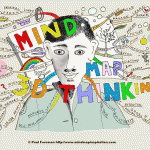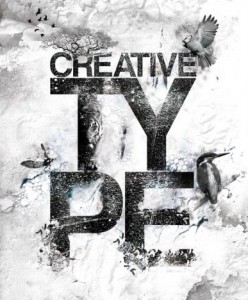A powerful technique to organize and generate ideas
According to Wikipedia:
A mind map is a diagram used to visually outline information. A mind map is often created around a single word or text, placed in the center, to which associated ideas, words and concepts are added. Major categories radiate from a central node, and lesser categories are sub-branches of larger branches. Categories can represent words, ideas, tasks, or other items related to a central key word or idea.
And you go, huh?
Mind mapping is one of those techniques which is easy to demonstrate or show but difficult to describe in words.
Check out the following video for a quick primer using a basic example:
Why is this technique superior to your typical lists of bullet points?
It has to do with the way the brain functions. It doesn’t organize its information like sentences in a book, instead it’s stored as a large collection of ideas connected with one another.
Tony Buzan, a influential promoter of mind mapping, likes contrast traditional note taking vs. mind mapping:
- Traditional note taking: a linear recording of information without connecting the concepts together. Doing without thinking
- Mind mapping: radial explosion of visually interconnected ideas
The technique has been widely used to promote creativity, problem solving, and synergetic ideation. The main reason why it’s such a powerful tool for those activities is because it forces to create association of ideas in a very visual way which tends to be the brain’s favorite way to recall and create new relationship between ideas.
To get started, all you need is a blank sheet of paper, a few colored pens and you are ready to go using the following guidelines suggested by Tony Buzan himself:
Guidelines on how to create a mind map
- Start in the center with an image of the topic, using at least 3 colors.
- Use images, symbols, codes, and dimensions throughout your mind map.
- Select key words and print using upper or lower case letters.
- Each word/image is best alone and sitting on its own line.
- The lines should be connected, starting from the central image. The central lines are thicker, organic and thinner as they radiate out from the centre.
- Make the lines the same length as the word/image they support.
- Use multiple colors throughout the mind map, for visual stimulation and also to encode or group.
- Develop your own personal style of mind mapping.
- Use emphasis and show associations in your mind map.
- Keep the mind map clear by using radial hierarchy, numerical order or outlines to embrace your branches.
Here’s a mind map on how to create a mind map… :-). The same website allows you to create online mind maps for free.
If you want to share your mind maps, or simply prefer to create them digitally, they are dozens of applications for desktop applications, web sites, and iPad/tablet/mobile applications to help you. Checkout Mind Mapping Software Blog for an impressive collection of reviews and recommendations.
Not convinced on where you would use mind mapping? Here are 100 reasons.
So, the next time you need to organize ideas in a new way or want to trigger new ideas, why don’t you give mind mapping a try?
PS: Have you ever used mind mapping? How did you like it? Share your comments below.

